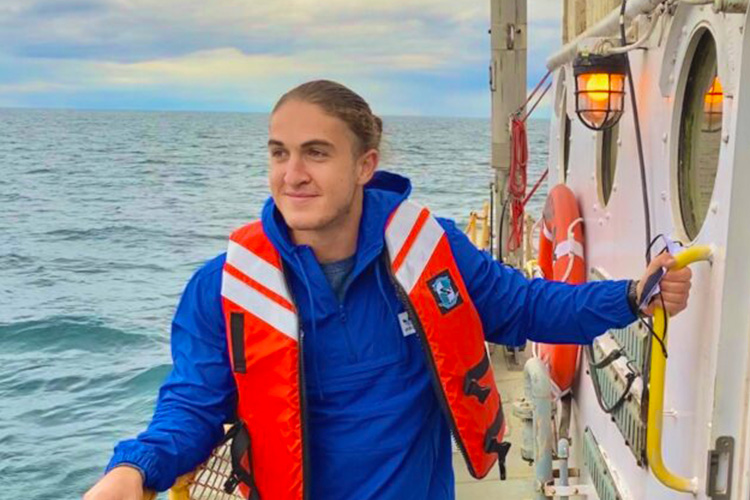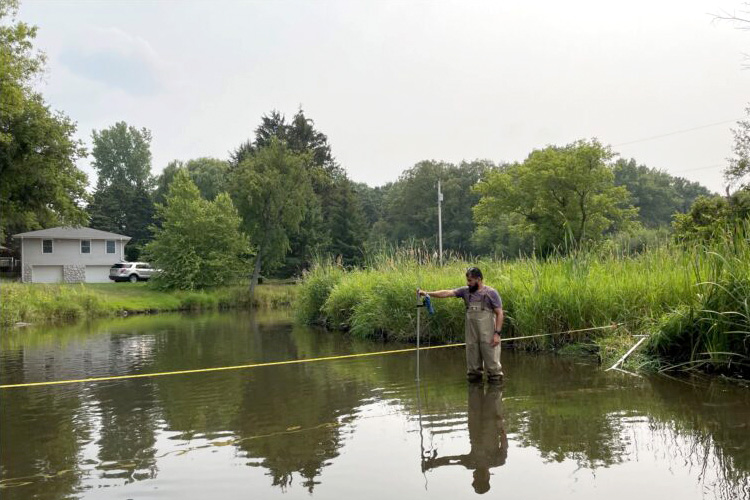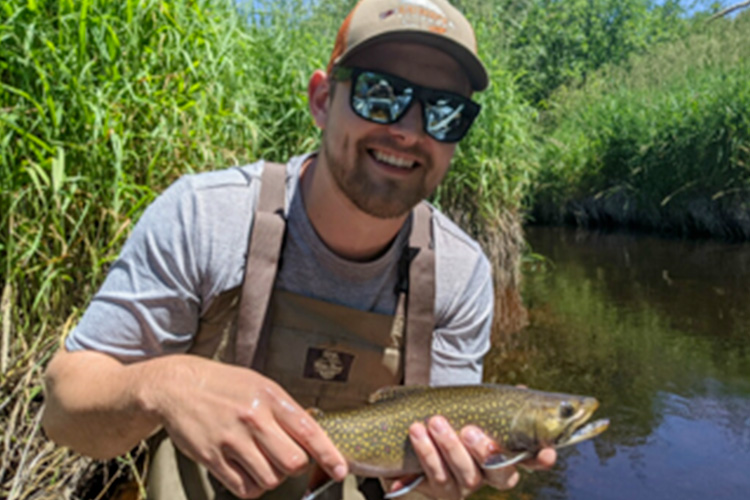School of Freshwater Sciences students got hands-on experience through a variety of internships in summer and fall of 2021. Here’s what a few of them had to say about their experiences.
Lee DuBois
- Location: Wisconsin Department of Natural Resources in Hayward, WI and Milwaukee, WI
- Position: Fisheries Technician
“I spent a lot of time out in the field completing tasks: electrofishing surveys on trout streams (where I also conducted a side project looking at macroinvertebrate diversity within trout streams impacted by beaver dams), tagging lake sturgeon and smallmouth bass, communicating with organizations like the National Park Service and even doing angling assessments, which translates to I went fishing! I would highly recommend this position for anyone who enjoys the great outdoors and getting out of the office when the weather is nice!”

James Romano
- Location: United States Geological Survey (USGS)
- Position: Hydrology Intern
“Over the course of my experience, I worked on projects that allowed me to implement the knowledge I have acquired to successfully complete projects ranging from sampling lakes to determining the severity of toxins to the installation of solar panels and storm sewer monitors. One of my favorite experiences was traveling around the state of Michigan sampling multiple lakes for harmful algal blooms (HABs). This internship provided me with meaningful hands-on experience that has helped further my professional career. I’m excited for the opportunity to continue my partnership with the USGS.”

Santos Quispe
- Location: Southeastern Wisconsin Regional Planning Commission (SEWRPC)
“My work was part of a larger chloride study consisting of surface water monitoring and groundwater chloride analysis. Chloride, which can enter water through road salt, water softeners and fertilizer, is an emerging contaminant posing a threat to our drinking water. I sampled water across 41 sites to track changes in our waterways over time. Additionally, SEWRPC provided me with training in computer programming, allowing me to contribute to data analysis and mapping. As a result, we created an interactive map to visualize chloride concentrations throughout southeastern Wisconsin. My work with SEWRPC will help to provide recommendations to reduce chloride pollution in rivers, streams, creeks and lakes.”
